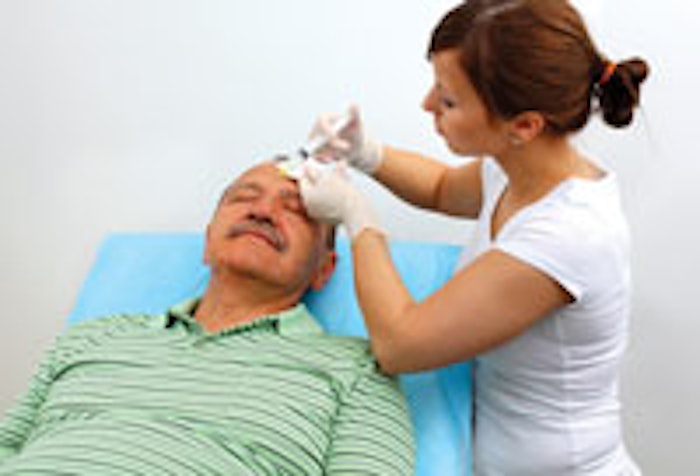
In the past 15 years alone, there has been nearly a 250% increase in the total number of cosmetic procedures, according to American Society for Aesthetic Plastic Surgery. With a remarkable 461% increase in nonsurgical procedures alone, esthetic medical practices had to make important decisions regarding skin care and the integration of esthetics. To remain competitive today, those adaptations need to be considered on a daily basis to achieve ultimate client satisfaction.
Physician’s point of view: Steven H. Dayan, MD, FACS
In the late 1990s, medical professionals started working with estheticians to offer a wide variety of services. Naturally, there was some opposition to this movement in the industry. Why would a physician offer “cosmetics,” and how would the two work together? Were they not competing for the same clients?
Cosmetic surgeons have many treatment options available for patients, including injectables, lasers and surgical procedures. There are also proven topical agents used to treat skin conditions, including tretinoin, certain antibiotics and hydroquinone. The cosmetic industry continued to grow, with patients spending large sums of money on over-the-counter (OTC) skin care products that didn’t have scientific research to support them. At the same time, physicians continued to simply recommend soap and water along with sunscreen. Although these all helped aid various esthetic conditions, there was a missing piece to the puzzle.
At its root, the job of an esthetically focused physician is not necessarily about making people look better, but feel better about themselves while treating them safely. Instead of focusing on existing concerns, some physicians decided to take a preventive approach to esthetics. After some skepticism, I took the advice of trusted colleagues and professionals in the industry and looked into adding skin care to my facial plastic surgery practice. After all, two of the top five noninvasive cosmetic procedures performed consistently were chemical peels and microdermabrasion. I quickly started seeing the benefits: Patients were happy with their results, and they were coming back on a regular basis for skin care maintenance. Those who received skin care services from my highly trained estheticians while using effective products remained loyal to the practice.
As opposed to only recommending a gentle cleanser and sunscreen, skin care should be a part of every medical esthetic treatment. Through the years, I have implemented different methods of introducing the importance of skin care to my patients. Estheticians at my practice now cleanse every patient before I treat them, and apply the appropriate post-treatment products and sunscreen. Additionally, surgical patients receive a complimentary ultrasound treatment to assist in the reduction of swelling and to speed the healing process.
The importance of combining skin care with medical services is evident now more than ever and continues to grow. Working with estheticians and adding “cosmetics,” although questionable 20 years ago, has provided a positive means to make patients happy.
Esthetician’s point of view: Terri A. Wojak
Physicians and other industry professionals often have opposing views on the benefits of estheticians. Some physicians believe that estheticians are extremely beneficial to their practice, while others argue that there is no benefit at all. The majority of this opposition comes from a lack of training and estheticians working beyond their scope of practice.
As the role of estheticians in medical practices grew, so did the thought that they could perform medical services since they were in a medical setting. There is no comparison to the amount of education required for each career path. In the United States, an esthetic license commonly requires training in the range of a couple of months to a year. Physicians, on the other hand, have completed at least eight years of education followed by residency. This is not to say that estheticians are not educated in cosmetics, but performing procedures that are intended for medical professionals is not safe. It is the physician’s job to treat patients’ skin and the job of the esthetician to maintain or manage it.
Estheticians play a vital role in skin maintenance, which makes combining medicine and esthetics of the utmost value if it is done properly. Advanced training is essential: An in-depth understanding of cosmetic medical procedures allows professionals to treat the skin safely before and after medical treatments. Patients feel comfortable knowing that the team works together to provide the best possible outcomes. These procedures work synergistically, and the ability to have all desired cosmetic needs addressed in one place offers patients convenience and reduces the risk of complications.
Cosmetic services in a medical setting must be positioned properly. From the receptionist to the physician, every team member should be knowledgeable about the available skin care services and products. Emphasis should be on the importance of enhancing and maintaining results. During the past few decades, tremendous advancements have occurred within the esthetic industry. If all professionals commit to working together and staying educated, the collaboration will continue to evolve and prosper.
Marketing director’s point of view: Tracy L. Drumm
As the industry of esthetic medicine has evolved, so have the options to reach new patients. One of the most common question these days is: “How do we incorporate social media into our medical spa?” Regardless of which vehicle you use to spread the word of your esthetic treatments, the new philosophy to adopt is to simply aim to speak with clients rather than to them. The goal is to get them talking with and about you. To begin, there are a few simple rules that will ensure you are growing through virtual networking rather than wasting time and resources.
- Be experimental. Don’t be afraid to try new things online, just be sure you measure the risk.
- Be easy. Try to make posting reviews about your services easier by reminding clients through e-mails or in-spa signage to share their experiences with your spa online.
- Be genuine. If you have someone posting on your behalf, be transparent that this person is an ambassador of your business. Engage in real conversations about topics you genuinely care about to help build trust and credibility.
- Be careful. Be sure to be Health Insurance Portability and Accountability Act (HIPAA) compliant with your online conversations and triple check consent forms before ever using patient photos.
- Be a friend, not an advertisement. People are drawn to Facebook for the social nature of its community. Posting personal pictures or information that is conversational will get you further than pushing sales messages through these mediums.
- Be seasonal. Fresh content is a critical part of online marketing. Use the calendar as a guide for new topics to post about.
- Be consistent. If you are trying to enhance relationships with clients and gain new ones, commit to a schedule of posting a blog or entry on your various online sites.
- Be educational. Offer exciting and intriguing information on industry advancements, positioning your business as a valued resource.
- Be visual. With facials, products and testimonials, the cosmetic industry is perfectly in line with the principles of social media. Consider a treatment of the week to show pictures and videos of, and post before-and-after photos of outstanding results.
- Be a professional. As an esthetician or provider, the way you position your online reputation will likely parallel the reputation you build in your community.
Be sure to track and evaluate your online activity; there is a fine line between growing your business with social media and wasting your life with social media.













